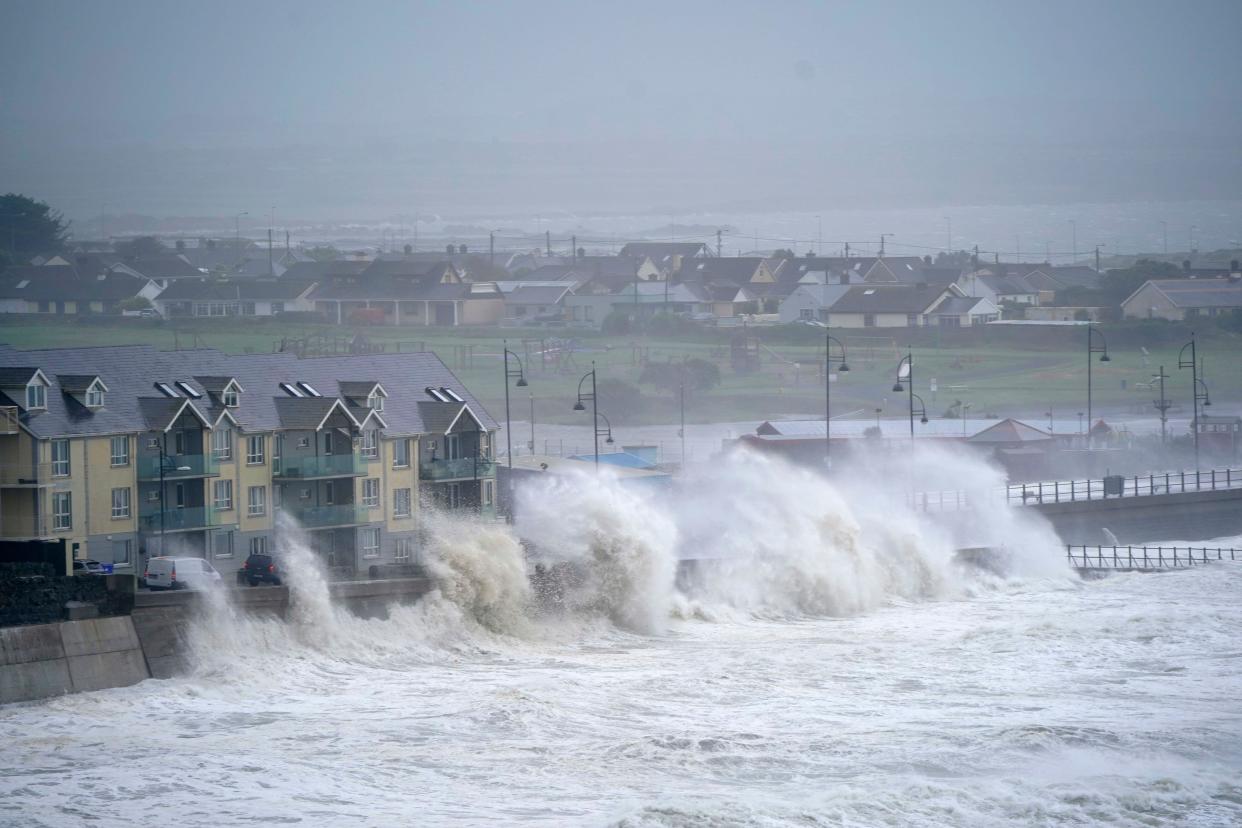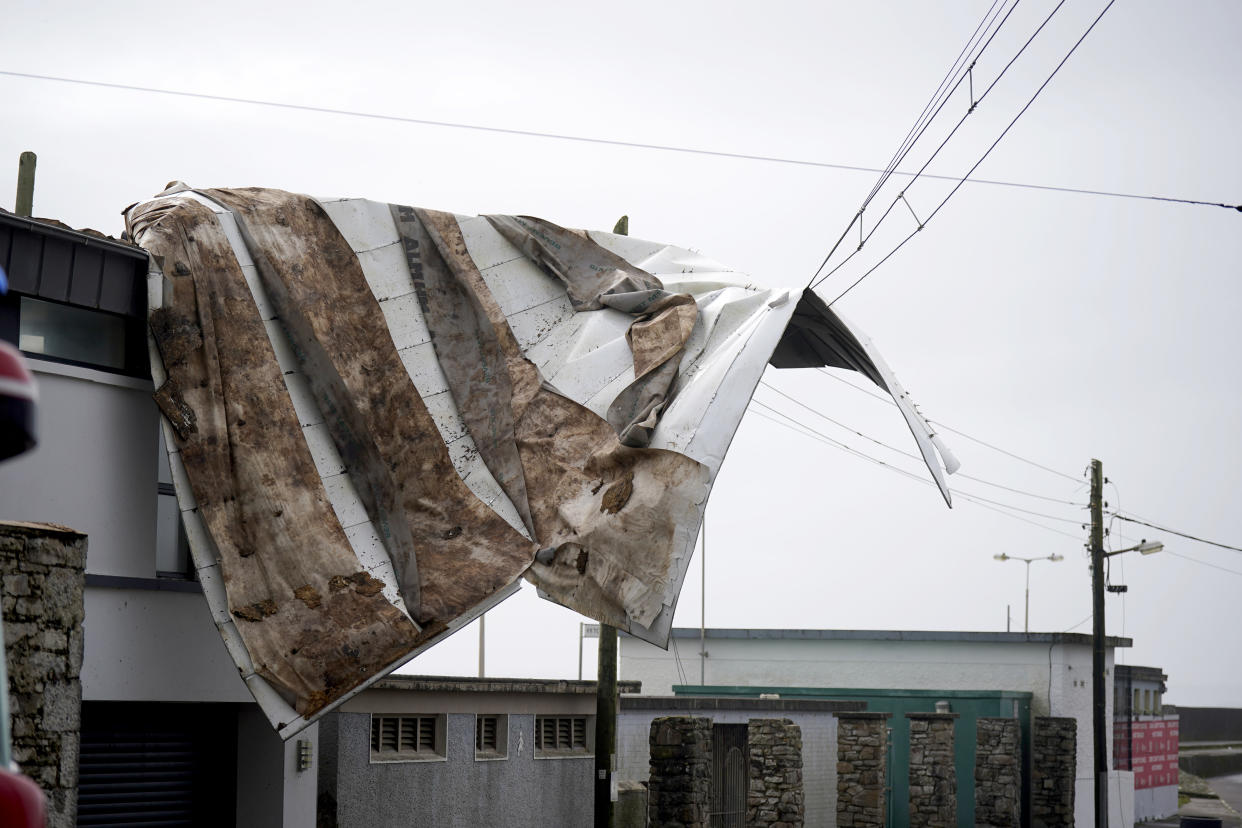Storm Agnes: Simple steps you can take to protect your home in a storm

The UK is bracing itself for the arrival of Storm Agnes, which is expected to bring damaging winds and stormy seas.
The first named storm of the season arrived in Ireland on Wednesday morning, and its strong winds of up to 80mph are set to hit the UK in the afternoon.
The Met Office has issued weather warnings, with a yellow wind warning in place from midday on Wednesday to 7am on Thursday.
The warning stretches across Scotland, Northern Ireland, Wales, the south-west of England, the West Midlands, and most of the north of England.
There is also a small "danger to life" alert due to flying debris and large waves, as well as a chance of flooding.
⚠️ #StormAgnes will bring strong winds and heavy rain to much of the UK this afternoon
⛅ Remaining drier across the southeast with some sunny spells and lighter winds pic.twitter.com/V5iYn9CNOc— Met Office (@metoffice) September 27, 2023
The weather warnings have highlighted the possibility of damage to buildings from the strong winds and the potential for power cuts affecting some areas.
Transport disruption is also expected, with some roads and bridges likely to close.
Gusts of 45-55 mph are expected to be widespread inland, with up to 80mph mph gusts around coasts and over hills.
As Storm Agnes, approaches, Yahoo News UK has put together simple steps you can take to protect your home:
Read more:
Storm Agnes tracker: When and where 80mph winds will hit over next 24 hours(Independent)
UK weather: Mini heatwave predicted in October after Storm Agnes (Sky News)
People in North East 'storm proofing' homes as region braces for 80mph winds (The Northern Echo)
Before a storm
Prepare for strong winds by securing loose objects inside your home to prevent damage or injury. Close and fasten doors and windows, and park vehicles away from buildings and trees.
Homeowners should shut and secure loft trapdoors to prevent damage to the roof or loft, and close storm shutters if the house is fitted with them.
If your chimney stacks are tall and in poor condition, move beds away from areas directly below them to prevent any potential injuries or damage to property.

During storm
Stay indoors as much as possible and avoid going outside unless absolutely necessary.
If you must go out, try to avoid walking or shelter close to buildings and trees, and keep away from the sheltered side of boundary walls and fences.
If you need to enter or leave your house, use doors on the sheltered side and close them behind you.
Open internal doors only when necessary, close them behind you and do not go outside to repair damage during the storm.
If you need to drive, take care on exposed routes such as bridges or high open roads. Slow down and be aware of side winds, especially if you are towing or are driving a high-sided vehicle.
If possible, delay your journey or find an alternative route and do not drive unless it is absolutely necessary.
The storm is also likely to cause “dangerous conditions” on the coasts around the UK and Ireland, according to The Royal National Lifeboat Institution (RNLI).
They have advised staying a “safe distance” away from the water and cliff edges to avoid being knocked over or washed into the sea.
⚠️ Yellow weather warning UPDATED ⚠️ #StormAgnes is expected to bring strong winds across a large part of the UK
Today 1200 – Thursday 0700
Latest info 👉 https://t.co/QwDLMfRBfs
Stay #WeatherAware⚠️ pic.twitter.com/yQ59zaWm47— Met Office (@metoffice) September 27, 2023
After the storm
Be extremely careful not to touch any electrical or telephone cables that have been blown down or are still hanging.
These cables may be live and could cause serious injury or even death.
Also, avoid walking too close to walls, buildings, and trees as the storm may have weakened them and they could collapse or fall.
Remember to check on any vulnerable neighbours or relatives to ensure that they are safe and help them make arrangements for any repairs that may be needed.


